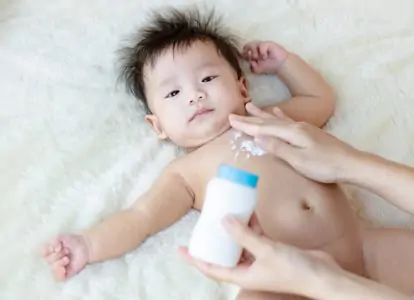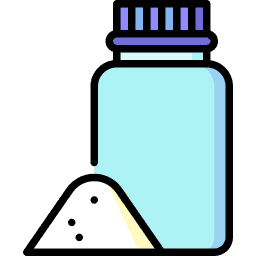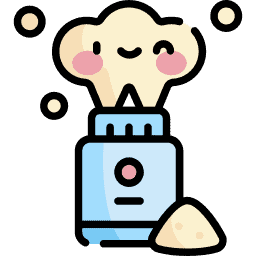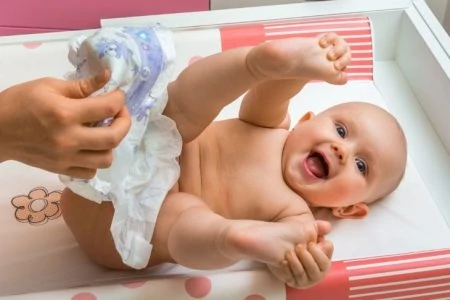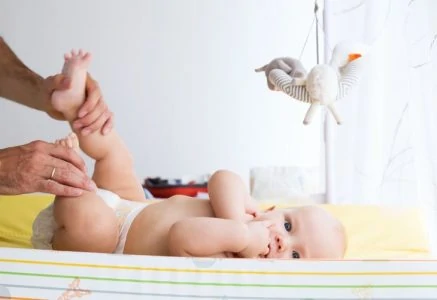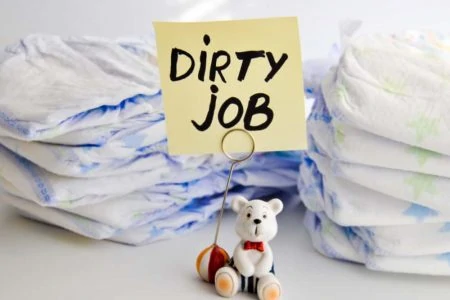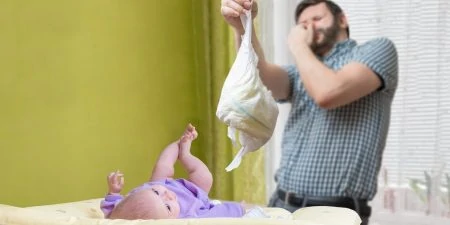Is baby powder safe? It’s a question that has been on everyone’s mind ever since a string of scary headlines. How did baby powder go from an everyday essential to a questionable parenting choice?
As concerned parents, it’s all too easy to get caught up in crazy headlines and rumors. Before dumping the entire contents of the diaper bags, we’ve turned to the experts. If we can’t reach for that good old-fashion white bottle, how are we supposed to prevent diaper rash?
Let’s look at the facts and see the safest way to prevent diaper rash. Hint: It’s easier than you might think.
Key Takeaways
- Baby powder can be made from talc or non-talc ingredients, with talc being the more controversial due to potential asbestos contamination and cancer risk.
- The American Academy of Pediatrics (AAP) warns against using baby powder due to inhalation risks, even with non-talc alternatives.
- To prevent diaper rash safely, keep your baby dry, rinse their bottom with water during changes, pat their skin dry, and avoid over-tightening diapers.
- Consider using diaper rash creams or petroleum jelly as safer alternatives to baby powder for preventing diaper rash.
What’s in Baby Powder?
Who doesn’t love that fresh oh-so-sweet baby powder fragrance? It’s a smell we associate with clean and cozy little ones.
And, that snow-white powder looks so clean! What could be wrong here?
Before we dig into baby powder safety, it is essential to keep in mind that not all baby powders are the same thing. Most importantly, we need to be aware that there are talcum baby powders and non-talcum baby powder. Talc baby powder is what has been at the core of this baby powder controversy.
What Is Talc Baby Powder?
Grandma’s changing table essential, talc baby powder, was made with magnesium, silicon, and oxygen. While these are natural ingredients that were considered safe for generations, serious concerns have popped up over the years.
According to the American Cancer Society, there are talc powders that contain cancer-causing asbestos and those that don’t (1). While the distinction between these types of talc is crucial, it’s not obvious to the average consumer. When we see talc listed on the ingredients label, we have no idea whether it’s a dangerous type of talc.
In response to the confusion and backlash, Johnson & Johnson no longer sells talc baby powder in North America (2).
What Is Non-Talc Baby Powder?
When it comes to non-talc baby powder, parents have a lot of choices. You’ll find baby powder alternatives made with cornstarch, baking soda, and kaolin clay on the shelves of the local drugstore. Talc alternatives like tapioca starch, arrowroot starch, rice starch, and oat flour are growing in popularity as well.
Is baby powder safe if it’s not made with talc? For that answer, we’ve got to dig a bit deeper. While some experts recommend talc-free baby powder alternatives (3), others remain skeptical.
Is Baby Powder Safe for Babies?
The American Academy of Pediatrics (AAP) has warned of the dangers of baby powder due to inhalation (4). While the concern used to just be about traditional talc baby powders, experts are starting to wonder if any baby powders are safe.
Some experts recommend against using any kind of powders (5). Echoing the claims of many doctors, he says that inhaling powder can be dangerous and outweigh any benefits of using it.
Dangers of Using Baby Powder
The Food and Drug Administration has been having public meetings recently to keep us informed and educated on baby powder dangers (6). Let’s dive into some of the topics that have popped up in these sessions.
The Risk of Breathing in Talcum Powder
The dangers of baby powder have taken center stage, in large part due to a lung disorder, Pulmonary Talcosis, caused by talc (7). While you might not notice it, it’s hard to avoid breathing in the powder during a diaper change.
In 2018, Johnson & Johnson was found guilty of selling baby powders with cancer-causing asbestos (8). The trial highlighted the grave danger of breathing in talc.
Does Baby Powder Cause Ovarian Cancer?
One of the most worrying questions of all was: does baby powder cause ovarian cancer? Unfortunately, it’s not the answer we were hoping for.
According to the International Agency for Research on Cancer (IARC), talc-based powders are not carcinogenic, though the risk is increased when baby powder is used on the genitals (9). Most of us parents decided then and there that it wasn’t a risk worth taking.
What to Use Instead of Baby Powder for Babies
Wondering how to prevent diaper rash safely? Here are the crucial steps that’ll make all the difference.
- Always keep your baby dry. Wet diapers need to be removed ASAP.
- During changes, rinse your baby’s bottom with water.
- No access to a sink? Use an alcohol-free fragrance-free wipe.
- Pat the skin dry during each change.
- Avoid over-tightening diapers.
Have a baby prone to diaper rash? Apply petroleum jelly, zinc oxide, or diaper rash creams. Vaseline Gentle Petroleum Jelly Blue Seal for babies and Desitin Daily Defense Baby Diaper Rash Cream were made for safe and easy prevention of diaper rash.
Pro Tip
An incredible amount of worried parents end up taking their baby to see the doctor for an uncomfortable rash. Take a few tips from professionals for a full look at the key DOs and DON’Ts for diaper rash.
Baby Powder FAQs
Here are some common questions parents have about baby powder.
Letting the Dust Settle
Is baby powder safe? While expert reviews are mixed, you may want to proceed with caution before you buy any kind of powder. Follow our tips for preventing diaper rash without powder for a safe and easy alternative.
Does the little one already have a diaper rash? It happens! That’s why you’ve got to know our 7 Simple Steps to Applying Diaper Cream.
